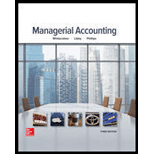
Explain how centralized and decentralized companies differ. What are the advantages and disadvantages of each?
Introduction:
Centralization is a process in which the control of activity lies in the hand of single authority.
Decentralization is a process in which the authority is delegated to other levels of the organization.
To state:
The difference between centralization and decentralization along with their advantages and disadvantages.
Answer to Problem 1Q
Centralization and decentralization are two antitheses of one another. In centralization, the concentration of control lies with single authority, i.e., higher level and in decentralization, the control is disseminated to lower levels of the organization.
Explanation of Solution
In centralization organization, the decision-making power lies with the highest level of authority in the organization. All the strategic and operational level decision are taken by high-level executives.
The advantages of centralization:
- A stringent control can be exercised over the organization.
- It helps in implementing the decisions quickly.
The disadvantages of centralization:
- All the burden lies on the manager.
- It leads to misuse of power.
In decentralization organization, the decision-making power is spread throughout the organization. The authority and responsibility are given to the lower level managers to manage their individual units.
The advantages of decentralization:
- It helps in reducing the burden on top executives.
- It promotes motivation among the lower levels of management.
The disadvantages of decentralization:
- It leads to overlapping of activities as managers in multiple areas perform the same function.
- Costlier and riskier decisions might be taken without keeping in loop the higher level of management.
Want to see more full solutions like this?
Chapter 10 Solutions
Managerial Accounting
- Don't use ai given answer general accountingarrow_forwardArdor Ltd. purchased a new equipment that is expected to be used in operations for 6 years for $60,000. The salvage value of the equipment after 6 years is $6,000. Assume the equipment was purchased on the first day of the fiscal year so no partial-year depreciation is needed. Using the Straight-Line Depreciation Method, what is the value of accumulated depreciation at the end of year 4?arrow_forwardGeneral Accountingarrow_forward
- Accountingarrow_forwardI am trying to find the accurate solution to this financial accounting problem with the correct explanation.arrow_forwardKD Industries has 30 million shares outstanding with a market price of $20 per share and no debt. KD has had consistently stable earnings and pays a 35% tax rate. Management plans to borrow $200 million on a permanent basis through a leveraged recapitalization in which they would use the borrowed funds to repurchase outstanding shares. The present value of KD's interest tax shield is closest to a. $130 million b. $200 million c. $400 million d. $70 millionarrow_forward
 Cornerstones of Cost Management (Cornerstones Ser...AccountingISBN:9781305970663Author:Don R. Hansen, Maryanne M. MowenPublisher:Cengage Learning
Cornerstones of Cost Management (Cornerstones Ser...AccountingISBN:9781305970663Author:Don R. Hansen, Maryanne M. MowenPublisher:Cengage Learning Managerial AccountingAccountingISBN:9781337912020Author:Carl Warren, Ph.d. Cma William B. TaylerPublisher:South-Western College Pub
Managerial AccountingAccountingISBN:9781337912020Author:Carl Warren, Ph.d. Cma William B. TaylerPublisher:South-Western College Pub Financial And Managerial AccountingAccountingISBN:9781337902663Author:WARREN, Carl S.Publisher:Cengage Learning,
Financial And Managerial AccountingAccountingISBN:9781337902663Author:WARREN, Carl S.Publisher:Cengage Learning,- Principles of Accounting Volume 2AccountingISBN:9781947172609Author:OpenStaxPublisher:OpenStax College
 Managerial Accounting: The Cornerstone of Busines...AccountingISBN:9781337115773Author:Maryanne M. Mowen, Don R. Hansen, Dan L. HeitgerPublisher:Cengage Learning
Managerial Accounting: The Cornerstone of Busines...AccountingISBN:9781337115773Author:Maryanne M. Mowen, Don R. Hansen, Dan L. HeitgerPublisher:Cengage Learning Intermediate Financial Management (MindTap Course...FinanceISBN:9781337395083Author:Eugene F. Brigham, Phillip R. DavesPublisher:Cengage Learning
Intermediate Financial Management (MindTap Course...FinanceISBN:9781337395083Author:Eugene F. Brigham, Phillip R. DavesPublisher:Cengage Learning





